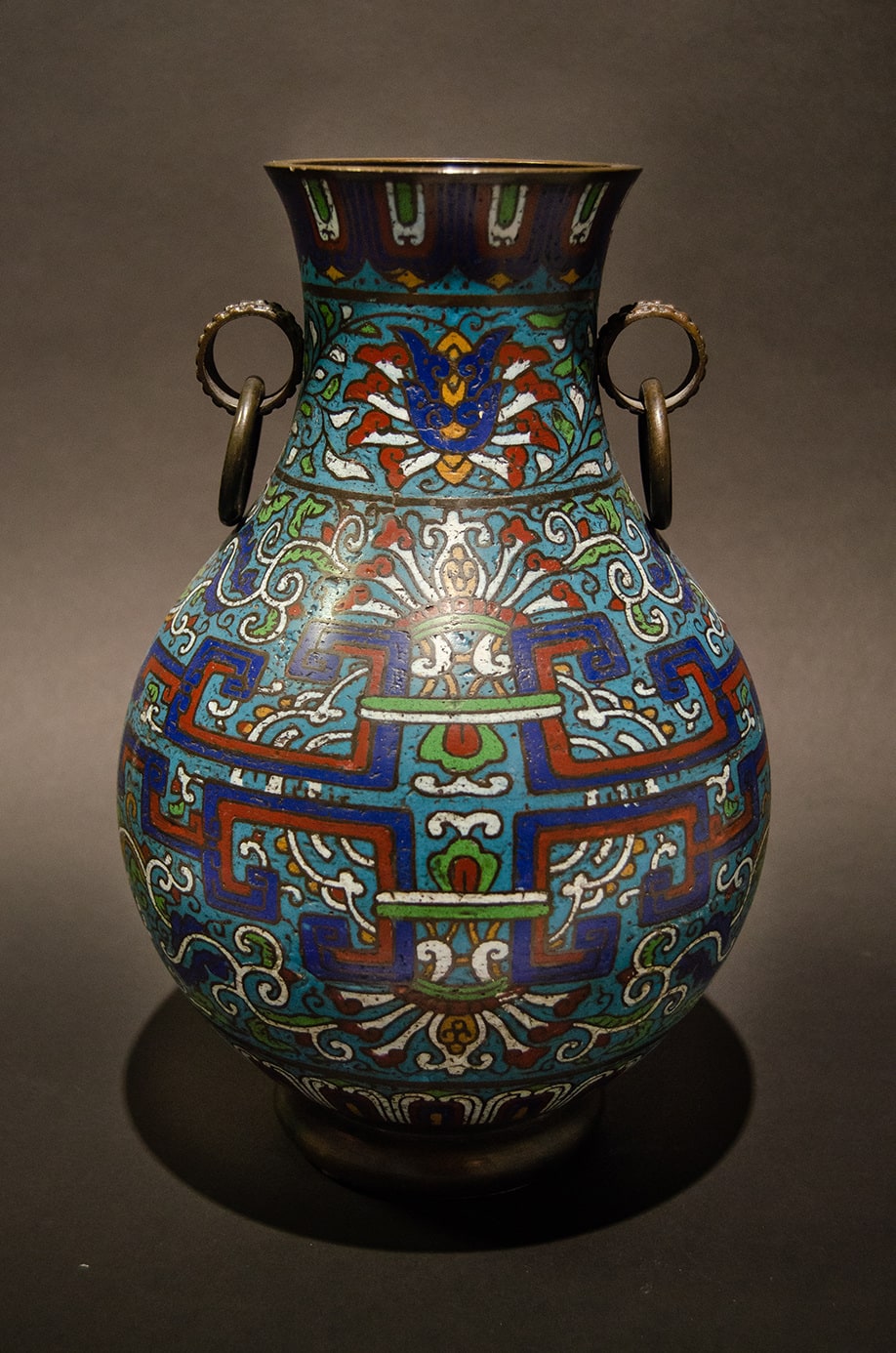Qing Dynasty Cloisonné Enamelled Vase, with Ring Handles, Eighteenth to Nineteenth Century AD
Bronze, Enamel
30.7 x 20.1 cm
12 1/8 x 7 7/8 in
12 1/8 x 7 7/8 in
MA.5
Further images
Jing Tai Lan (the Chinese for cloisonné) is a unique form of art that combines sculpture, painting, copper smithing and porcelain making. Its name originates from a careful pairing of...
Jing Tai Lan (the Chinese for cloisonné) is a unique form of art that combines sculpture, painting, copper smithing and porcelain making. Its name originates from a careful pairing of “Jing Tai,” the name of a Ming dynasty emperor during whose reign mass production of such articles began, and “Lan,” meaning blue, which is the background color for most cloisonné goods. Cloisonné enamel techniques were originally brought from Persia to China’s Yunnan Province during the Yuan Dynasty. During the Ming dynasty, Persian techniques were then incorporated with the traditional, native techniques for metal inlaying and porcelain making, resulting in the birth of a new kind of cloisonné called Jing Tai Lan.
Belonging with item number MA.6, this unique cloisonné vase from the Qing dynasty is elaborately decorated in multi-colored enamels with leafy interlacing scrolls bearing lotuses and floral motifs. Patterning varies along four distinct pictorial planes. The lip is adorned with a concentric petal or ruyi frieze in red, green, and deep blue, while the trumpet neck features a lotus scroll below hanging blades, flanked by a pair of loop handles suspending loose rings. A large red and blue key-fret band on the body of the vessel is the source of such decoration. The foot is further adorned with a band of pendent lappets.
Jing Tai Lan is one of the most exquisite cloisonné techniques in history, and as such, it is by far the most popular and sought-after type of cloisonné to be found. This rare and ornate piece is a must for collectors of Chinese art.
Belonging with item number MA.6, this unique cloisonné vase from the Qing dynasty is elaborately decorated in multi-colored enamels with leafy interlacing scrolls bearing lotuses and floral motifs. Patterning varies along four distinct pictorial planes. The lip is adorned with a concentric petal or ruyi frieze in red, green, and deep blue, while the trumpet neck features a lotus scroll below hanging blades, flanked by a pair of loop handles suspending loose rings. A large red and blue key-fret band on the body of the vessel is the source of such decoration. The foot is further adorned with a band of pendent lappets.
Jing Tai Lan is one of the most exquisite cloisonné techniques in history, and as such, it is by far the most popular and sought-after type of cloisonné to be found. This rare and ornate piece is a must for collectors of Chinese art.









